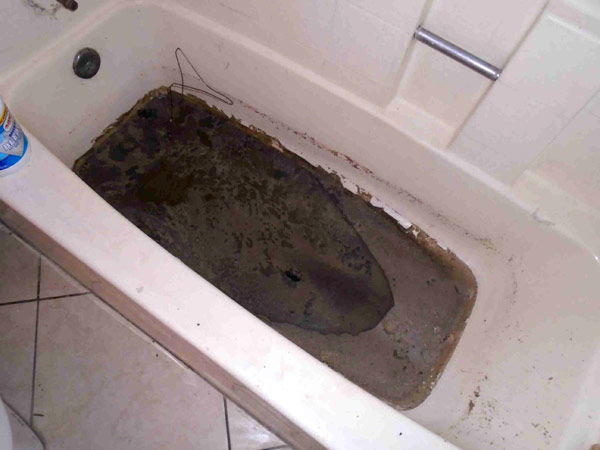Crucial Explanations for Effluent in the Bathtub
Crucial Explanations for Effluent in the Bathtub
Blog Article
What're your opinions about Why sewage is coming up through your bathtub?

Sewage back-up in the bathtub can be an upsetting and unhygienic trouble for any type of homeowner. Not just is it troublesome, but it likewise presents major health threats and shows underlying issues with the plumbing system. Comprehending why sewer is turning up with the bathtub is vital for taking proper action to resolve the issue effectively.
Introduction to the Problem
Usual Factors for Sewer Backup
Clogs in the Sewage System Line
Among the most common root causes of sewage backup is a blockage in the sewer line. This can take place due to the buildup of particles, grease, or foreign objects in the pipelines, stopping appropriate circulation and causing sewer to back up right into your bath tub.
Tree Root Breach
Tree roots looking for moisture and nutrients can penetrate sewer lines with little splits or joints. With time, these origins can grow and broaden, causing considerable damage to the pipelines and resulting in sewer backup issues.
Recognizing the Trouble
When sewage starts backing up right into the tub, it's a clear sign of a problem with the drainage system. The wastewater that should be moving far from your home is instead finding its way back right into your space, which can lead to significant damages and health hazards.
Potential Reasons
Several elements can add to sewage back-up in the bathtub. From clogs in the drain line to issues with the plumbing framework, recognizing the origin is vital for locating a service.
Aging Framework
Older homes may have outdated plumbing systems that are much more at risk to corrosion, fractures, and damage. As pipelines age, they come to be more prone to leakages and clogs, increasing the probability of sewage back-up cases.
Heavy Rainfall or Flooding
Throughout periods of heavy rainfall or flooding, the drain system may come to be overwhelmed with excess water, creating backups and overflows. This can result in sewage backing up into tubs and various other fixtures inside the home.
Indications of Sewage Backup
Foul Odors
Unpleasant odors emanating from drains or components, especially in the washroom, may show sewer back-up concerns. These smells are commonly solid and persistent, indicating a trouble that requires immediate interest.
Slow Draining Fixtures
Tubs, sinks, and commodes that drain pipes gradually or otherwise in all could be experiencing sewer backup. If multiple components are impacted at the same time, it's most likely that the concern stems from an usual factor, such as the primary sewage system line.
Gurgling Sounds
Weird gurgling or gurgling noises coming from drains pipes when water is running in other places in the house are a sign of air trapped in the plumbing system. This air build-up can result from sewage back-up and should be investigated without delay.
Health Risks Connected With Sewage Backup
Contamination of Water
Sewage backup can pollute the water in your home, positioning a significant wellness danger to you and your household. Exposure to contaminated water can cause gastrointestinal concerns, skin infections, and various other illnesses.
Mold and mildew Growth
Moisture from sewage backup can create excellent problems for mold development in your house. Mold spores can exacerbate respiratory system issues and create allergic reactions in delicate people, making prompt clean-up crucial.
Spread of Illness
Sewage contains unsafe bacteria, viruses, and parasites that can create a range of conditions, including hepatitis, cholera, and gastroenteritis. Coming into contact with sewage or infected surfaces places you at risk of infection.
Cleaning Up After Sewer Back-up
Disinfection Procedures
Completely sanitize and sanitize impacted areas after sewer backup to remove dangerous germs and protect against mold and mildew growth. Usage suitable cleansing items and protective gear to ensure risk-free and effective clean-up.
Restoration of Impacted Locations
Repair any damages to flooring, wall surfaces, or fixtures triggered by sewage backup. Depending upon the degree of the damage, you might require to change carpets, drywall, or various other materials to restore your home to its pre-loss condition.
Immediate Actions to Take
Switching Off Supply Of Water
In the event of sewage backup, it's important to switch off the water supply to prevent additional contamination and damage. Locate the major water shutoff valve in your home and closed it off until the issue can be resolved.
Calling a Professional Plumber
Taking care of sewage backup is not a do it yourself task. Contact a licensed plumber with experience in handling sewage-related issues to assess the circumstance and carry out necessary repair services or cleanups.
Avoiding Contact with Polluted Water
Until the sewage backup is settled, avoid contact with infected water to stop the spread of germs and pathogens. Wear safety gear if you need to be in the damaged area and wash your hands thoroughly later.
Safety nets
Routine Maintenance of Sewage System Lines
Arrange regular inspections and maintenance of your sewer lines to recognize and attend to prospective problems before they rise into major troubles. This can consist of cleaning particles, examining for tree origin intrusion, and repairing any type of damaged pipes.
Setting Up Bayou Valves
Take into consideration installing backwater valves in your plumbing system to avoid sewage from flowing back right into your home throughout durations of heavy rainfall or flooding. These shutoffs immediately close when water starts backing up, securing your building from contamination.
Proper Disposal of Household Waste
Avoid flushing anything besides toilet paper and human waste down the commode to stop obstructions and blockages in the drain line. Dispose of oil, oil, and various other house chemicals appropriately to decrease the risk of plumbing troubles.
Why Is Water Backing Up in My Bathtub When I Flush My Toilet?
What to do about a sewer line clog
First, don’t bother with plunging. No amount of plunging will dislodge the clog in a sewer line. The clog is too far away. Plungers are for clogs in the toilet itself, not the sewer line. Plus, the most likely causes of a sewer clog are:
Tree roots Flushed toys or feminine products Grease buildup Those items don’t move easily. And in the case of tree roots, the roots need to be cut out of the pipe and the pipe will need to be repaired.
You’ll need a closet auger. A closet auger is a type of plumber’s snake with a protective cover to keep from scratching the delicate porcelain toilet. If the clog is further down, you may need to remove the toilet or use one of your cleanouts to get to the clog.
We also recommend doing a video inspection of the drain to ensure that the cause of the clog has been completely removed. Otherwise, you could have the same problem again in a few days or weeks.
https://mspplumbingheatingair.com/blog/why-is-water-backing-up-in-my-bathtub-when-i-flush-my-toilet

Do you appreciate reading about Why sewage is coming up through your bathtub? Give a short review directly below. We would be delighted to listen to your feelings about this page. In hopes to see you back again later on. If you liked our article plz make sure you remember to share it. Thanks a lot for going through it.
Start Now
Report this page